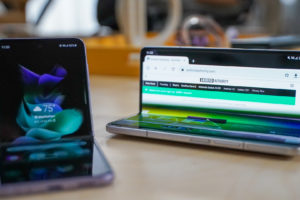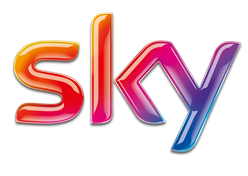Purchasing the best USB cable television can be complicated, thanks to odd calling plans that are tough for even techies to bear in mind. This will alter this year when the USB Implementers Online Forum (USB-IF) presents easier labeling for USB4: USB20 Gbps and USB40 Gbps.
As a perk, the USB-IF is tweaking USB 3.0 to decrease a few of the confusion around “SuperSpeed.” If whatever goes according to strategy, all those cable televisions promoting assistance for “USB 3.2 Gen 2 × 2” will disappear from the marketplace.
What Is USB4?
USB4 is the next variation of USB,and it offers many improvements and advantages It will utilize the reversible Type C plug that’s rapidly ending up being more popular and double the leading bandwidth of USB 3.2 Gen2x2. (See what we indicate about calling?)
There are 2 variations of USB4. In theory, the leading variation permits optimum speeds of as much as 40 gigabits per 2nd, which is the exact same asThunderbolt 3 There’s likewise a fallback speed that’s half that (20 Gbps), which is the exact same as USB 3.2 Gen 2 × 2.
On top of all of this, USB4 integrates the Thunderbolt 3 spec. This makes it possible for the 40 Gbps variation to be suitable with Thunderbolt 3 equipment. Consisting of compatibility with Thunderbolt 3 is optional, nevertheless, and as much as the PC or motherboard producer.
RELATED: USB4: What’s Different and Why It Matters
The Existing USB Calling Mess

When we reported on USB4 in November 2019, we did so with excellent uneasiness since USB interaction was currently muddled. This was partially since USB-IF (the market requirements company in charge of USB) reorganized its calling plan a number of times. The media likewise never ever actually welcomed the main trademark name for USB 3.0, nor did computer system makers.
This all made it challenging for anybody to genuinely comprehend how quick their USB ports were and with which gadgets they worked. With USB4 on the horizon, numerous were fretted this would just become worse.
For instance, USB 3’s present branding is a huge mess. It began with USB 3.1 Gen 1, which was initially called simply USB 3.0. Next, what need to have been called USB 3.1, was called USB 3.1 Gen 2, and after that USB 3.2 was called Gen 3.2 2 × 2.
Furthermore, the main trademark name were expected to be SuperSpeed and SuperSpeed+, however those were seldom utilized.
Makers weren’t expected to puzzle everybody with all the Gen 3.2 2 × 2 things, however you do see these terms when you search anywhere for USB cable televisions. It was (and is) an horrific mess.
Nevertheless, if you wish to untangle the mess a bit, you can have a look at our article on the different versions of USB.
The New USB4 Branding
With the frequently utilized names USB 3.1 and up, it wasn’t explained that each brand-new generation is quicker, such as USB 3.0, USB 3.1, and USB 3.2.
USB-IF wants to bypass all the “generations” things and utilize a basic, clear calling structure that will specify precisely what each USB variation can in theory do.
Initially, let’s take a look at USB4 prior to we figure out USB 3.0. USB4 has 2 variations: USB4 20 Gbps and USB4 40 Gbps. These are the main trademark name, however the product packaging logo design (see listed below) reveals each variation as USB20 and USB40 with “Gbps” added onto completion.

The branding is basic. It makes it clear whether it’s the quicker or fastest type of USB4. We likewise will not be shocked if individuals drop the 4 from USB4, and simply describe these as USB20 and USB40, because that’s what will appear on the product packaging.
The port and cable television logo designs resemble what USB-IF finished with the USB 3.1 and up, utilizing simply a basic sign and the bandwidth.
USB-IF Modifies the Tinker USB 3

The USB-IF hopes that this time around, computer system makers will likewise ditch the USB 3.1 rubbish for clearer messaging and describe whatever (consisting of USB 3.1 Gen 1) as SuperSpeed USB.
The USB-IF stated the term “SuperSpeed” will stay limited to USB 3– there will not be any brand-new requirements with this label in the future. So, it’s a tradition term that’s currently in usage for the older requirement. This can’t be assisted currently, however when the world transfers to USB4, things will get a lot easier.
USB 3.1 Gen 1, understood prior to as plain old 3.0, is now SuperSpeed USB 5Gbps.
USB 3.1 Gen 2 continues to bear the main brand SuperSpeed USB 10 Gbps, and USB 3.1 Gen 2 × 2 is SuperSpeed USB 20 Gbps. The product packaging logo design is likewise comparable to what it is now, however, so it’s still a bit complicated.
SuperSpeed 5 will have the SuperSpeed logo design with “5 Gbps” in fine print below, while SuperSpeed 10 will check out SuperSpeed+ with a small-print “10 Gbps.” SuperSpeed 20 product packaging will likewise be called SuperSpeed+, however with “20 Gbps” below.
This is not perfect, however a minimum of there’s a method to distinguish, even if it’s not super-obvious. We ‘d choose the USB-IF to simply call these USB 3.0 5Gbps, USB 3.0 10 Gbps, and USB 3.0 20 Gbps. Even dropping the “.0” and calling them all USB3 would be much better.
Regardless, at the least, the port and cable television logo designs are plainly identified as “SS” for SuperSpeed, and consist of the matching bandwidth number, as they do now.
The primary disadvantage to the approaching state of USB will likely be comprehending whether you require a basic USB Type-A cable television or the more recent USB Type-C. Sadly, this is inescapable as long as gadget makers continue to use Type-A ports to support tradition hardware, and Type-C is the future.
Lastly! USB Names You Can Comprehend
General, the future for USB understanding looks brighter. There’s no factor to call USB4 by anything aside from what we covered above given that terms like 4.0 or 4.1 aren’t being utilized.
A push to relabel the numerous variations of USB 3 to SuperSpeed USB is most likely impractical. The market has actually balked at doing that for many years now. Plus, SuperSpeed makes it seem like it’s faster than USB4, which it’s not. If USB 2.0 continues to spend time, that will not be much of an issue since it will constantly simply be USB 2.0.
Whatever occurs with USB 3.1 and up, however, the labeling for USB4 looks appealing and simple to comprehend. This will be a huge assistance for individuals who are buying a USB4-friendly laptop computer or motherboard– or simply attempting to find out which damn cable television they require!








